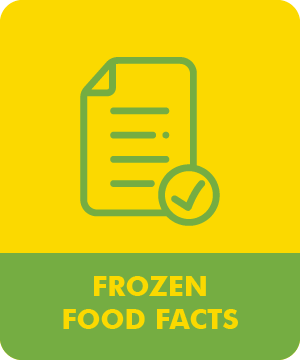The freezer is most utilized for storing our favourite dessert (ice cream, for instance). It’s an excellent storage space for nutritious meals and snacks you can consume whenever you want.
However, frozen food is frequently criticized. People often think frozen meals contain loads of salt, preservatives, and fat. There are many myths about the best way to refreeze and defrost food items and when to toss items.
We’ll break down the myths and facts about frozen food, so you can utilize your freezer’s resources to provide healthy meals.
Frozen food Health Facts Myths
Myth No. 1 Freeze food contains fewer nutrients than fresh.
The most common misconception is that frozen food does not have the same nutrients as fresh produce. However, a frozen pizza with vegetables will not have as many nutrients and vitamins as, for example, a fresh salad. Frozen fruits and vegetables contain identical if perhaps more nutritional value than what you may find in the produce aisle. This is because frozen vegetables and fruits tend to be picked at their peak of ripeness. To be precise, a study showed that antioxidant levels in fresh and frozen vegetables -green beans, peas, carrots, spinach, and broccoli — were almost identical. Additionally, while some believe frozen food items can lose their nutritional value when stored in the freezer, the reduction in nutrients from different studies is not significant.
Myth # 2: Frozen kills bacteria
While it tastes great, freezing food does not kill off bacteria and other harmful elements within our food. The reality is that only heating or cooking food at the right temperature kills any bacteria present. To ensure your food is safe, take an oven thermometer!
Myth #3 The fact that all frozen food facts are extremely processed
It’s easy to think that most frozen food items are processed. Although this was once the standard in the aisle of freezers, our changing, health-conscious lifestyle has led to food companies offering healthy food items that can be excellent choices when we don’t have enough time to cook. The most effective way to identify a wholesome frozen food is to look at the label. Ingredients are listed in order from the largest to the smallest amount, and you should pay focus on the first few items you’ll see. It should appear fairly shorter; the longer your list is, the greater possibilities for additives or preservatives.
Myth #4 The truth is that all frozen foods are packed with sodium
Like processing, consumers often look into sodium content when they think about frozen foods. This is because sodium is frequently used as a preservative in addition to a method to enhance flavour. Although the natural preservation properties of sodium will always be an actual frozen food fact, more manufacturers are adding lower-sodium alternatives to their menus. Always look at the nutritional information on the label to ensure you know what’s best for you.
FREEZING AND DEFROSTING MYTHS
Myth 5: Every food item may be frozen
Although the list of options is lengthy when it comes to the types of foods that could be frozen, there are some items you shouldn’t put into the freezer. First, the delicate vegetables (think arugula, scallions and plants) can be prone to sticking together after being frozen and then curdle upon thawing. It is best to avoid freezing them together. Additionally, although many prefer to store their coffees in the freezer, the oil from coffee beans is naturally destroyed by freezing temperatures and consequently lose some of their flavours. Keeping your coffee in a cool, dry area is recommended.
Myth #6 After it’s been thawed, you aren’t able to freeze it for another time.
We’re not sure when the myth originated; however, you can freeze and then refreeze food only if the food hasn’t been exposed to air for longer than two hours. If you adhere to the two-hour rule (or 1 hour if it’s above 90 degrees), the food you consume will be safe. But refreezing raw foods, especially meat, could cause a loss of taste due to little moisture being lost as it melts.
STORING MYTHS
Myth No. 7 Frozen food can be stored anyplace inside your refrigerator.
It’s not something you think about frequently, but where you store food items in the refrigerator is crucial. However, most people choose the freezer door because this is where the temperature fluctuates most. After all, warm air can enter the freezer when you open or shut the door. To ensure that everything remains cool, store food items as close to the rear in the Freezer.
Conclusion:
Frozen foods can be a cost-effective way to get your daily intake of fruits and veggies. Frozen foods can be a great way to improve your diet if you stay away from the myths



